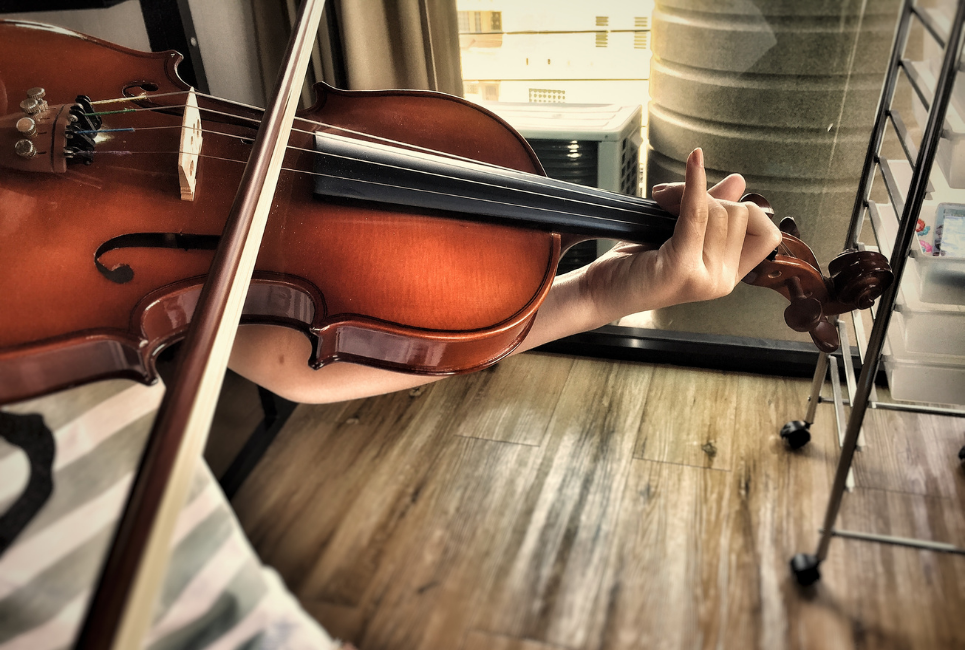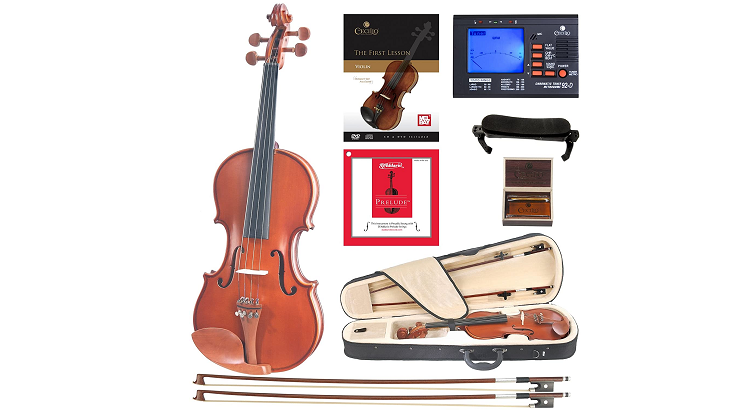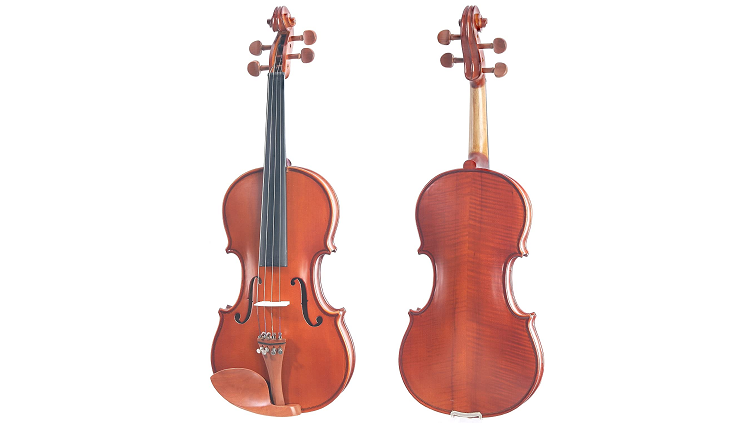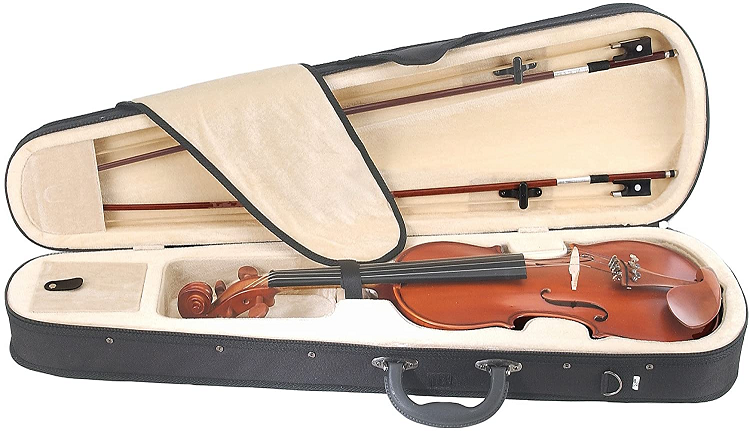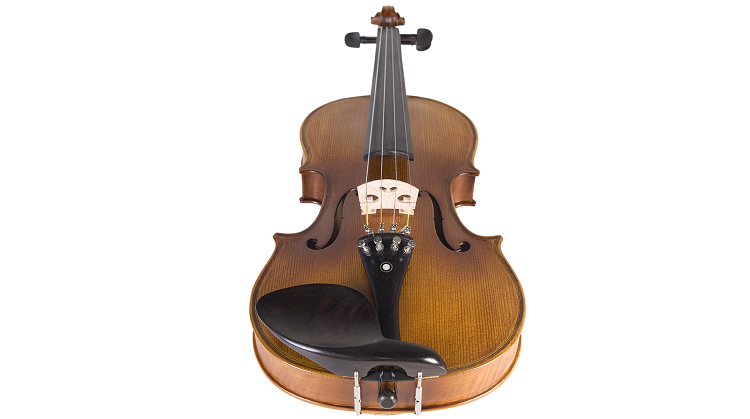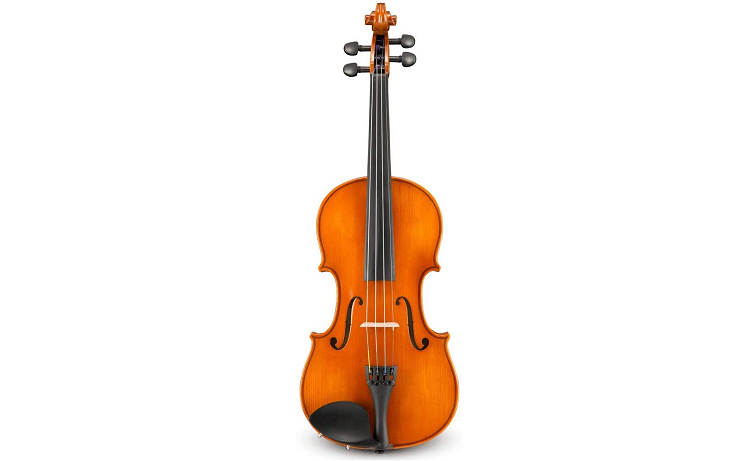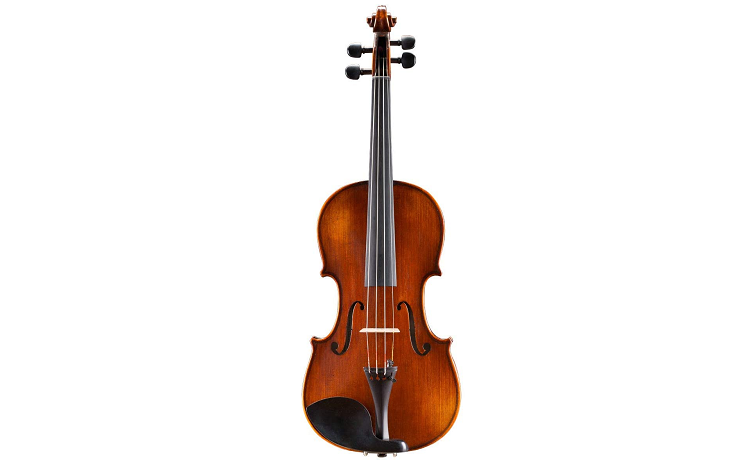- Mendini MV300: An Honest Breakdown and Review - April 6, 2022
- Cecilio Viola Review and Guide: 3 Violas, Which is the Best? - January 21, 2022
- Cecilio Electric Violin Review and Guide: A Silent Practice Violin! - January 20, 2022
When I first picked up the violin, I chose Cecilio for my first instrument. At the time, they were the only decent cheap student violins on the market.
It’s been nearly a decade since I bought my first violin, and now it’s a fair assessment to say that Cecilio has a decent bit of competition. Their low-end violins like the CVN 100/200 remain some of the cheapest on the market, but they lack quality and longevity.
As Cecilio attempts to produce higher-end violins, they are met with a significant amount of competition from other instrument retailers with a better reputation, brand longevity, and professional background experience. Still, they prevail, but is the CVN 400 a worthy contender?
Pros, Cons, and Bottomline
You will have a playable instrument to track down a CVN 400, either new or used. However, the overall reviews are very mixed. Some love the violin for ease of tuning and sweet tone, while others found it poor quality. Overall, this violin has pleased new students the most, which tells me that Cecilio has succeeded in making a slightly upgraded student instrument.
My personal opinion: When this violin first came out, it was one of the better instruments on the market and at a very affordable price. However, the tone and overall quality are lacking.
Today you can find many different violins of better quality for less than 100 dollars more. These violins will allow you to learn faster, easier and stay with you longer into your musical journey.
Pros
- Solid spruce top
- Maple back neck and sides
- Ebony Fingerboard
- D’Addario Prelude Strings
- Comes with everything you need
Cons
- Bright, tinny upper register
- Orange machine sprayed finish
- Poor quality accessories
- Lacks longevity
- Hard to find
Student Violins
There are a variety of student violins set at many different price points. You can spend as little as 100 dollars on beginner instruments or as much as 1000, sometimes even more. In general, the more you pay for your violin, the better the instrument. When it comes to Cecilio violins, this is certainly the case.
The price point will reflect the overall quality of the violin’s construction and materials. Older violins from well-known makers will go for a lot of money, while antique copies are also worth a considerable amount. The older a quality violin is, the better it will sound and the more it will be worth.
String instruments are made from tonewoods. These are hard or softwoods with tonal properties that help produce and project sound. Violins are traditionally made with a spruce top and maple back and sides.
More expensive instruments will feature dried wood or wood harvested from select locations. Typically student instruments feature Chinese tonewoods instead of European because it’s cheaper to acquire; this is especially true for Chinese-made instruments.
I’ve seen student models with aged and unaged wood; typically, the wood is aged less than ten years and sometimes less than two. While it aging wood in a controlled environment will give it a headstart, it’s usually not aged long enough to make a huge impact.
Still, if you find a violin with aged wood at your price point and you like it, it will be of better quality.
Any violin worth owning will come with an ebony fingerboard; it’s the standard wood used for violin fingerboards for its durability and moldability. Cheaper student violins will have dyed hardwood or maple, which won’t hold up in the same way an ebony fingerboard will. Fittings on most student models are ebony, but they can vary, as we will see below.
Fittings are a personal choice; once you reach a high enough level, each violinist will have their preference or not care as long as everything works. Students should look for violin with four fine tuners on the tailpiece to aid in tuning while they get used to playing and handling the pegs. Fine tuners can be added by a luthier or yourself if needed.
Student violins bought online may or may not need to be taken to a luthier to be set up. Cecilio violins will vary depending on the retailer; mine came with the bridge down. However, since I had an electric pick-up on it, I didn’t need to take it in since bridge placement was obvious. Unless you or your teacher is comfortable setting up the bridge, it’s best to take it in.
Your luthier can also put new strings on your violin if needed. Some student violins come with D’Addario Preludes or Thomastik Dominants. Others come with cheap in-house brands. Preludes and Dominants are student standards, but there are many strings out there.
Student models come with violin outfits; this means that you will receive more than just the instrument and its case. Most student outfits come with a bow, shoulder rest, and rosin to get you started. Cecilio includes several extras with most of their violins. These vary in quality but are easy enough to replace in six months.
Is the CVN 400 a Good Violin?
The CVN 400 is a peculiar instrument overall, and nothing about it genuinely excites me. It’s certainly not a bad violin, but it’s far from something that I would choose personally. The violin is made with a solid spruce top and maple back, neck and sides. The finish is orange and very shiny, which honestly gives this violin a cheaper look.
Since this is a lower-end standard student model, it doesn’t feature anything special in terms of wood age or source. More than likely, it’s made from inexpensive Chinese tonewoods.
I’ve heard conflicting reports about the material of the fingerboard. I’ve seen both maple and ebony used on listing and in reviews; Amazon currently specifies a maple fingerboard.
We know this is of lower quality and ultimately contributes to my inability to recommend this violin. The fittings are boxwood; while this isn’t standard, it’s not the first time I’ve seen boxwood fittings on a student violin. I honestly like the look of the fittings against the very orange varnish. Unlike ebony, pure black, boxwood doesn’t clash as much against the brightness.
There are four fine tuners on the tailpiece, which is excellent for students; keep in mind that they may need to be replaced. My fine tuners broke within six months, this pushed me to tune via pegs, but I was very frustrated as a beginner.
This violin comes strung with the standard D’Addario prelude strings, which are perfectly adequate for a new beginner. These are strong strings that are easy to tune and resistant to humidity and temperature changes.
The rest of the violin and outfit is pretty basic. It comes with a tapered hard case, two bows, a shoulder rest, rosin, a tuner, and a music book. I dislike Cecilio’s violins bows and quickly upgraded to a cheaper wood bow from Fiddlershop. I now use a carbon fiber bow and would not return to a brazilwood bow.
The shoulder rest will work for a while but upgraded is pretty inexpensive and a small price to pay for overall comfort. I currently have a Fiddlershop carbon fiber shoulder rest, but I also like Kun and Everest. The rest of the accessories are usable and fine until you feel you need something else.
How Does it Sound?
This violin and its tone match perfectly, a bright violin with a bright tone. I personally really dislike the tone of this violin, but that is because I’m not the biggest fan of bright instruments.
I found the upper register on this violin to be tinny and shrill; it’s very typical of a cheaper student instrument. The lower register is also very bright, but I found it pretty clear.
I don’t have confidence that this violin can warm up and produce a better tone. Unlike the CVN 500 or 600, which have enough quality in their bones to grow, the CVN 400 lacks that. While it may settle a little over time, the only real way to change the tone will be to change the strings to something much higher end.
I’d typically recommend Obligatos or even Vision Solo’s, but these strings are expensive, coming in at nearly 100 dollars a set. You can purchase a much better instrument all around for an extra hundred dollars, and the money would be better spent there.
This is true for the accessories as well. The money you would spend replacing the accessories could be spent on a better violin with quality accessories.
Overall, I dislike this violin, and I wouldn’t recommend it to someone looking for a student violin. I know Cecilio makes better instruments for roughly the same price. Additionally, several quality student violin packages from other retailers will outplay any Cecilio violin.
Let’s check them out!
Try These Instead
Top Choice: There are several violins I’d recommend to students depending on their needs and wants. The OB1 Violin outfit is one of my favorites because it’s affordable and quality. I’ll admit I also feel like this violin would be suitable for fiddle music if a student wants to learn that style of music.
I know many adult students, and most are interested in fiddle, classical, and genre music, so this suits them well. This violin features solid carved spruce and maple tonewoods. The fingerboard and most fittings are ebony, the tailpiece is carbon composite, and it has four fine tuners.
The bridge is a French Despiau or Holstein 1 star, and the violin comes with either D’Addario Prelude or Fiddlerhsop strings. I like Fiddlershop strings and have used them reliably for about five years.
They are similar to Dominants but require less time to break in. The outfit comes with a case, carbon fiber bow, shoulder rest, rosin, practice mute, and tuner. Tone-wise it’s very lovely clear, and even but slightly bright for my taste.
Budget Choice
The CVN 500 is a small step up from the CVN 400 and has more or less taken its place in the line as well. This is because the CVN 500 and 400 are pretty similar in price and quality. The CVN 500 features a solid spruce wood top and flamed maple neck, back, and sides with an antique satin finish that looks lovely.
Unlike the 400, the orange is much less pronounced, and the finish is very soft. The fingerboard and fittings are 100% ebony wood, and the tailpiece has four detachable fine tuners.
This violin comes strung with D’Addario prelude strings but does not have an extra set. The outfit is the same as the CVN 400. The CVN 500 has a slightly mellower tone that makes the violin more enjoyable and less shrill out of the case, but overall it’s still rather bright.
Step Up Choice
If you want a true student violin, look no further than the Eastman VL100. Eastman has been making violins for ages, becoming the gold standard for students. If you rent a violin, there is a good chance that you will receive an Eastman VL 80 or 100. The VL100 features Chinese tonewoods with hand inlaid purfling.
Hand inlaid purfling is something I rarely see on student instruments and is a mark of the quality that goes into Eastman violins. The fingerboard and fittings are ebony with a composite tailpiece with four built-in fine tuners. The bridge is French Despiau, and the violin typically comes with Prelude strings, but I’ve seen dominants from time to time.
The price and outfit accessories will depend on the retailer. Currently, the outfit with a case and bow retails for $815 on Amazon, but I’ve seen it for much less elsewhere. You can find these violins used or as rentals very easily if you can’t afford the upfront cost of a new outfit.
High-Quality Choice
Before I talk about this choice, I want to say that I don’t consider the Eastman VL305 violin to be a student instrument necessarily. It’s far more expensive than many violins you can buy, but it’s a high-quality violin that you won’t find yourself needing to upgrade for a very long time. If I had started on a violin like this, I would have avoided many frustrations.
The VL305 is their top step-up violin and features European tonewoods with hand-in-laid purfling, a Despiau bridge, and pure ebony fittings and fingerboard. The violin itself is pretty even across all registers. It is a little bright, but it’s far from shrill, Obligatos or Vision Solo’s help even it out a bit. The G string is nice and robust with just a little grit.
The accessories will vary; I received a Cadenza * bow and rosin. It came with Dominant strings. Fiddlershop also sounds good. I currently use the normal Thomastik Vision Solo strings.
I’ve had my VL305 for five years now, and I’ve been playing for nearly a decade. I can honestly say I’m no closer to outgrowing this instrument than when I received it. While I’ve improved considerably and continue to grow as a musician, this violin is still ahead of me and will be for many years to come.
FAQ
Answer: Purfling is the black edge around the top of the violin. Purfling is there to stop the violin from cracking. If the violin does crack the purfling will help stop it from spreading further, allowing time to get it repaired.
Answer: In general, I recommend first figuring out what you can afford and then purchasing accordingly. If you buy a better violin now, you will grow with it as a musician longer. In general, I recommend spending at least $200 on a starter violin, but you can spend up to $1,000.
While I recommend future-proofing by purchasing a higher quality instrument, I don’t recommend spending more than $1400 on a starting instrument because the nuances of a more expensive violin won’t be appreciated by the student for a very long time.
Answer: The best way to darken your violin, if it is too bright, is to put strings on it that will darken the tone. I recommend Obligatos, Piastro Evahs, Corellis or Piastro Passione.
These strings are on the warmer end of the spectrum and will even out a bright violin. If you have a warm violin, then you could consider Helicore, Vision or Vision Solo, or Kaplan Strings. Vision strings are very bright but rather complex, and I enjoy them despite their brightness.
Final Thoughts
The CVN 400 isn’t for me, and overall I wouldn’t recommend this violin to anyone. If you want a Cecilio violin, I would recommend the CVN 500 for its availability and better quality.
However, if you want a quality student instrument, the OB1 from Fiddlershop will get you started on one of the best violins. If you want to start on the gold standard, the Eastman VL 100 is one of the most well-known and used student violins.
Looking for more interesting readings? Check out:

